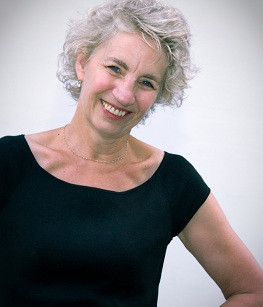Julia Steiny: How Westerly Turned its Science Scores Around
Thursday, January 19, 2012
In 2008, bad news came like body blows to the little beach town of Westerly, RI.
First, the elementary and middle-school science scores were fairly disappointing, but the high school full-on bombed. The 11th graders scored a percentage point below the state average, which itself was a pathetic 18 percent proficient. Teachers had worked hard for test-score squat.
Second, the realities of falling enrollment and a strained budget meant the district had to mothball one elementary school at the end of the year. Always upsetting.
GET THE LATEST BREAKING NEWS HERE -- SIGN UP FOR GOLOCAL FREE DAILY EBLASTThe re-shuffling of kids and teachers included adding the 5th grade to the middle school. The district laid off one elementary principal and assigned the others to the remaining schools. For the most part, teachers chose to follow their principal to wherever he or she got assigned.
And 6 superintendents had cycled through the district since 2005.
The system churned.
But even with all that roiling change, the district couldn’t afford to let science fall through the cracks. Remarkably, teacher volunteers from each building, K-12, stepped up to form a Science Task Force -- on their own time and dime. Very unusual. They’re to be commended.
Surprising Lessons
Teachers, not just curriculum officials, came out of the isolation of their classrooms and buildings to collaborate on a comprehensive picture of K-12 science instruction.
Once the hurt and defensiveness died down, the Task Force’s view of Westerly’s science program had many clear lessons, one of which was quite surprising.
But first a bit about Westerly. The large, lovely homes overlooking Narraganset Bay belong mainly to “summer people” whose kids go to school in New York, New Jersey, wherever. The monster casinos that moved close by in Connecticut increased the demand for Westerly’s rental housing. In the winter, the summer rental properties are relatively cheap. But that means the schools get and lose highly-mobile students all the time.
And the big manufacturing employers have been closing up shop.
So Westerly’s year-round population has Rhode Island’s 8th lowest median family income of Rhode Island’s 36 school districts – a surprise to me. The poverty rate among students has tripled in the last decade, from 11 to 33 percent.
Westerly officials make no excuses, though. The town wants good schools and is willing to support them. The current Superintendent, Roy Seitsinger, gratefully reports that their teachers union is supportive of reform efforts and wants to be “innovative and creative.”
While the Task Force preceded Seitsinger’s arrival, he was an instant fan of a K-12 approach to the science problem. “Any time you silo an effort to fix a problem, you haven’t trained the new habits of mind you need to keep the problem fixed. The Task Force is now a systematic practice. They are establishing a districtwide culture of data gathering and reflection.”
Well, what did they find?
Naturally, they found a whole laundry list of interrelated issues, including a badly misaligned curriculum with gaping holes.
But by far the biggest issue they found themselves facing was the fact that everything about teaching science has changed rather quickly, and Westerly hadn’t really kept up.
New Knowledge
In recent decades, scientific research has exploded with new knowledge. That coupled with the advent of the internet means the subject has long outgrown its status as a body of knowledge, facts and formulae, that a kid could learn and spit back on a test. Instead, students need to learn to think like a scientist – predict, prove, show evidence. Most importantly, they must be able to show they can use their skills proficiently with hands-on tasks and experiments.
For example, consider a released item from the “inquiry” section of the state’s science test, the NECAP. This test question asks kids to perform a an actual task, know how to understand the physical evidence in front of them, draw conclusions and explain them. Very different from just remembering an answer.
Just for the record, Rhode Island’s secondary regulations mandate that high school diplomas must require students to demonstrate their ability to apply knowledge. In addition to exposing students to the subject in general, teachers need to pose essential questions and guide kids through learning the skills and information they’ll need to arrive at a conclusion. This practice of question or “inquiry”-driven instruction is a huge shift for all but the most recently-trained educators.
Fortunately, the kit-based science curriculum that the district had been using K-8, GEMS-net, is deeply inquiry-based. So Westerly had something to build with. But it was going to be ten tons of work to shift instruction from remembering factoids to focusing more on thinking.
Their work paid off big time. Last spring the high school students achieved 44 percent proficiency, while the state average struggled only up to 25 percent. Westerly’s elementary and middle schools are a good 22 and 15 points above state average, respectively.
But wait? What made the big difference? Surprisingly, the Task Force decided that the most effective way to solving the science problem K-12 would be – I love this – teaching the kids to write. Next week, we’ll see how showering the kids with writing instruction was the magic that turned disappointment to triumph.
Julia Steiny is a freelance columnist whose work also regularly appears at EducationNews.org . She is the founding director of the Youth Restoration Project, a restorative-practices initiative, currently building a demonstration project in Central Falls, Rhode Island. She consults for schools and government initiatives, including regular work for The Providence Plan for whom she analyzes data. For more detail, see juliasteiny.com or contact her at [email protected] or c/o GoLocalProv, 44 Weybosset Street, Providence, RI 02903.
If you valued this article, please LIKE GoLocalProv.com on Facebook by clicking HERE.
# # #



